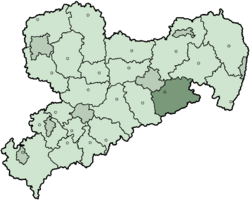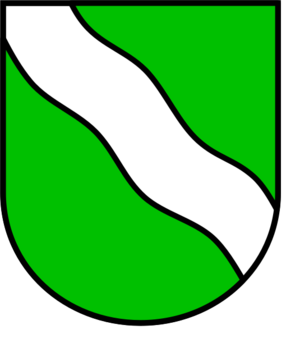Sächsische Schweiz Rural District facts for kids
Quick facts for kids
Sächsische Schweiz
|
|
|---|---|
 |
|
| Country | |
| State | Saxony |
| Adm. region | Dresden |
| Capital | Pirna |
| Area | |
| • Total | 887.88 km2 (342.81 sq mi) |
| Population
(2001)
|
|
| • Total | 147,180 |
| • Density | 165.766/km2 (429.331/sq mi) |
| Time zone | UTC+1 (CET) |
| • Summer (DST) | UTC+2 (CEST) |
| Vehicle registration | PIR |
| Website | lra-saechsische-schweiz.de |
The Sächsische Schweiz (which means Saxon Switzerland) is a rural district, also known as a Landkreis, in the southern part of the German state of Saxony. It shares a border with the Czech Republic.
If you see a car from this district, its license plate will have "PIR" on it. This stands for the city of Pirna. The district's own abbreviation would be "SS", but this is not used because it is the same as a historical group that caused a lot of harm.
Contents
History of the District
The Sächsische Schweiz district was formed in 1994. It was created when two smaller districts, Sebnitz and Pirna, joined together.
Geography: Why "Saxon Switzerland"?
This district is named after its beautiful landscape, which is called Saxon Switzerland. It's known for being the most mountainous area in Saxony, with many unique rock formations and deep valleys.
What the Coat of Arms Means
The coat of arms is a special symbol that tells a story about the district's geography. The two green areas you see on the coat of arms represent the forests found in the two main mountain regions. The white wavy line in the middle stands for the Elbe River, which flows through the area. This coat of arms was designed by Horst Torke from Pirna.
Towns and Communities
Here are the main towns and communities that make up the Sächsische Schweiz district:
| Towns | Communities |
|---|---|
|
|
Related Pages


